Roses and Roses Ciutadella
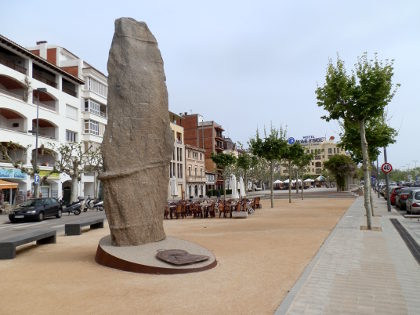 Roses is the main tourist town of the northen part of the Costa Brava sitting with one half of the town reaching into the Cap de Creus, and the other side stretching around the beach of the long bay of the Gulf of Roses to the modern marina-towns of Sant Margarida and Empuriabrava. With easy access to Figueres and the French border, the town is extremely popular with French visitors, or overland travellers from Germany or the Netherlands.
Roses is the main tourist town of the northen part of the Costa Brava sitting with one half of the town reaching into the Cap de Creus, and the other side stretching around the beach of the long bay of the Gulf of Roses to the modern marina-towns of Sant Margarida and Empuriabrava. With easy access to Figueres and the French border, the town is extremely popular with French visitors, or overland travellers from Germany or the Netherlands.
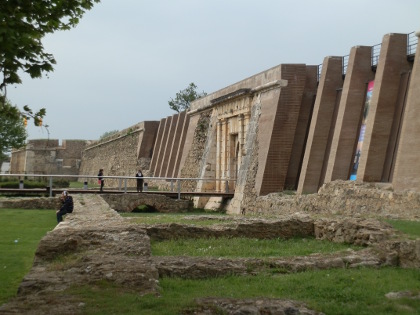 The location is fabulous with a big town beach, hidden chic beaches at Canyelles, views down the bay to the south, a large port, and views (on a clear day you can see the Pyrenees). However, the modern town itself though a bustling holiday town, can feel a little uninspiring if you are looking for nestling fishermen's cottages and historic wending streets. But there is a reason for that, which is deeply entwined with the history of the town and the more you know the history, the more intriguing the town becomes.
The location is fabulous with a big town beach, hidden chic beaches at Canyelles, views down the bay to the south, a large port, and views (on a clear day you can see the Pyrenees). However, the modern town itself though a bustling holiday town, can feel a little uninspiring if you are looking for nestling fishermen's cottages and historic wending streets. But there is a reason for that, which is deeply entwined with the history of the town and the more you know the history, the more intriguing the town becomes.
The reason why Roses lacks a medieval type centre is because the town moved in the 17th and 18th centuries. The remains of the medieval town of Roses can actually be found completely inside the fortified walls of the Ciutadella of Roses - the large fort that you pass on the way into the town from Figueres.
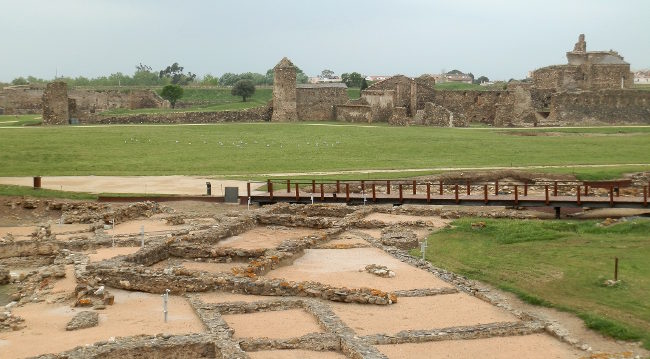
Roses actually has a history that stretches back to the Ibers, then as a Greek colony, linked to Empuries further south, before the Roman's moved in. The Roman's built at Roses, but also left a defensive fort above the town. In medieval times Roses became more important as a centre of trade and grew with a full town wall with defensive towers.
Roses defensive position made it an important strategic location and as pirate raids increased in the 16th Century as the Ottomans, known as the Barbary pirates, under Barbarossa, it became clear that the medieval walls were no longer considered adequate to safeguard the town from cannons on land or from sea.
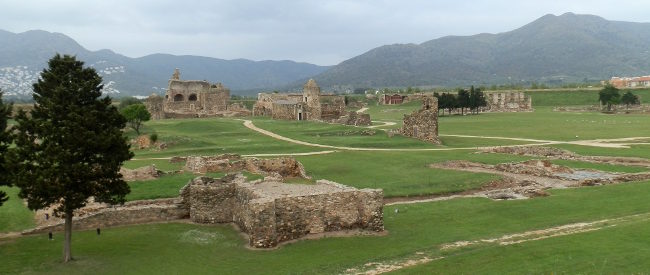
So instead of starting again, the town was enveloped in the massive earth and fortifications that can now be seen at Roses Ciutadella. Completed in 1553, the medieval town remained with streets, houses and still with it's original walls but now completely within the fortress. In actual fact the fortress is about double the size of the town inside, which should give a feeling of scale both of the building as it is now, but also the enormous effort needed to create the fortifications.
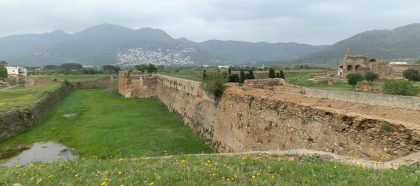 The Ciutadella was part of a wider defensive network of towers and castles that can still be seen around the town. The Ciutadella didn't just house the town, it also held a garrison for soldiers and progressively parts of the population moved outside the town walls.
The Ciutadella was part of a wider defensive network of towers and castles that can still be seen around the town. The Ciutadella didn't just house the town, it also held a garrison for soldiers and progressively parts of the population moved outside the town walls.
The Ciutadella became part of the ebb-and-flow of the wars and power struggles between France and Spain. Starting with the Catalan Revolt when Catalonia became independent under French protection), and ultimately into the War of Spanish Succession, revolutionary France, and then into the era of Napoleonic conquest. At the end of the Napoleonic era, the Ciutadella and the town inside were destroyed, leading to the full development of modern Roses along the bay.
 The evidence for this remarkable history is through the town, though it means the modern centre feels functional rather than pretty. The fortifications and older buildings can be seen dotted around, such as the Castell de la Trinitat above the port or various towns situated on the hills at the back of Roses (Puig means hill).
The evidence for this remarkable history is through the town, though it means the modern centre feels functional rather than pretty. The fortifications and older buildings can be seen dotted around, such as the Castell de la Trinitat above the port or various towns situated on the hills at the back of Roses (Puig means hill).
However, inside the Ciutadella walls, it is still possible to see the remains of the old Roses. Archeologists have discovered the remains of the Greek and Roman Roses - also inside the Ciutadella, but outside the Medieval town, while parts of the Medieval walls and towers still exist within the Ciutadella itself.
Visiting the Ciutadella costs €4 for entry which includes a small museum with artifacts from Greek and Roman times. For visitors, it's worth going to the museum first to get a sense of the multiple layers of history and how they overlap within the same site. Entering into the Ciutdella from the front, the old town is to the left, with walls and towers still visible and a clockwise tour around the walls will give an ample overview of the scale and sense of what it would have been like to live in a town with a wall going up around the outside.
Neighbouring walks
Llança - Cadaques and Port Lligat - Port de la Selva - Sant Pere de Rodes - Figueres and Castell de Sant Ferran - Roses - Canyelles beaches to Cap Falconera - Cadaques to Roses - La Jonquera to Fort de Bellegarde (France) - Peralada - Castello d'Empuries
Comments | ||
Visitor: 84.98.223.156 |
12 Nov 2016 10:20 |
|
can i take my well educated dog? | ||
Saul |
10 Feb 2017 11:42 |
|
I believe you can take a dog into the Ciutadella grounds on a lead/leash, but not inside the museum buildings. Check their website to confirm. | ||

 Walks and other things
Walks and other things